LAST UPDATED: 7/28/23 – Camping in the Serengeti National Park
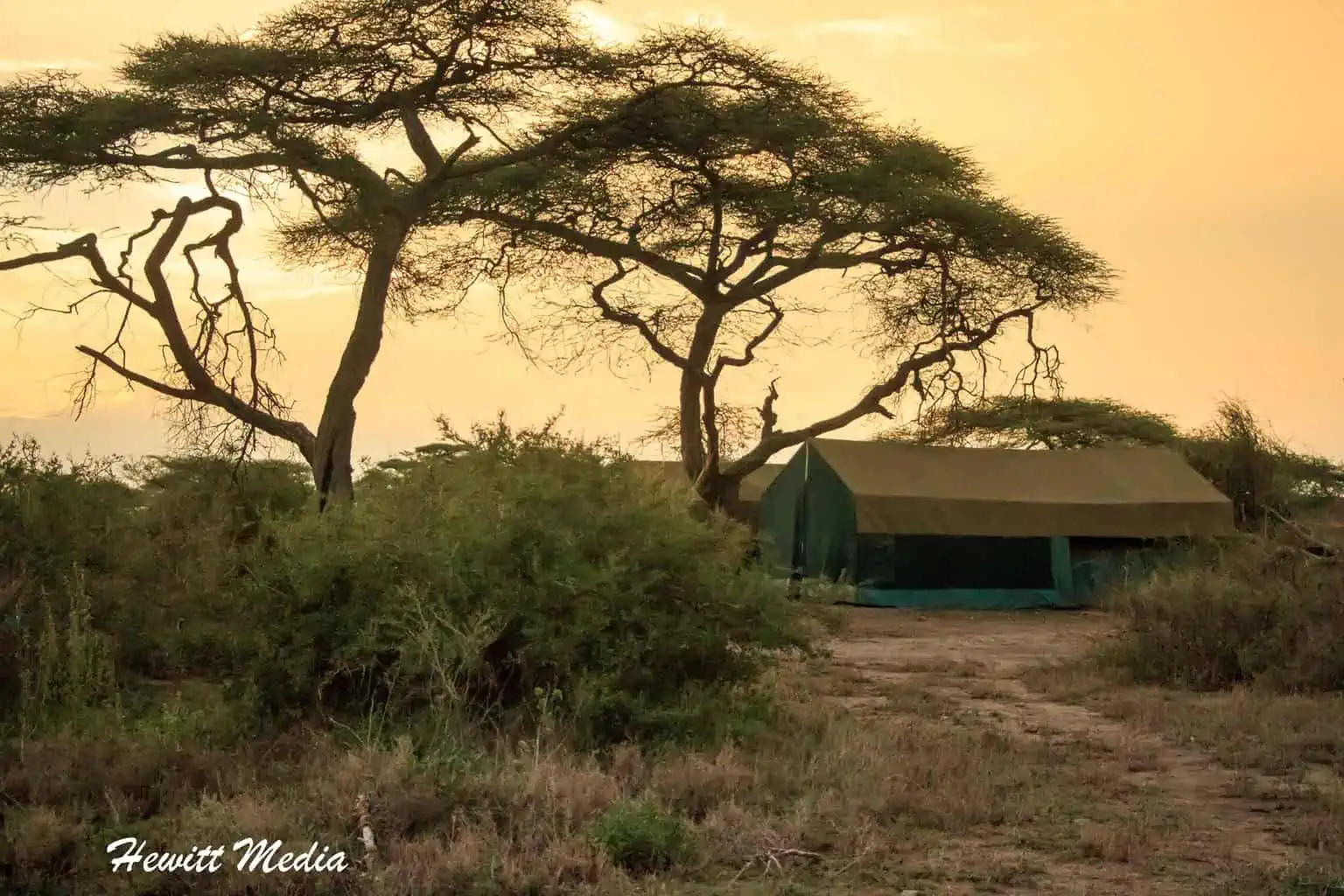
It was nearly 2am in Tanzania’s infamous Serengeti National Park, and there we were, tucked into our cots underneath mosquito netting, with nothing between us and the wildlife except for a canvas tent. We were actually camping in the Serengeti.
I had been sitting awake for the past half hour, listening to the tell-tale whooping sound of spotted hyenas getting closer and closer to our camp. It was both terrifying and mesmerizing. I couldn’t help but wonder what they were doing and where they were heading.
We had arrived at camp late that evening, as we had come directly from safari at Lake Manyara National Park. We didn’t have a whole lot of time to get acclimated and settled before we had to head to our tents to sleep.

When we arrived, we were greeted with a refreshing glass of fruit juice and a wonderful dinner and then shown where we would be spending the night. The tents were nothing like the traditional camping tents that we are used to in North America. Camping in the Serengeti was unlike any camping I had done before.
They are thick canvas tents with lighting cables running throughout the tent. The lights are powered by a battery that is charged by a solar panel. There is a sink and a shower, but the plumbing is gravity-based. If you want to take a shower, you have to let the camp operators know and they pour a large bucket of water into the feeder tank situated on top of your tent.
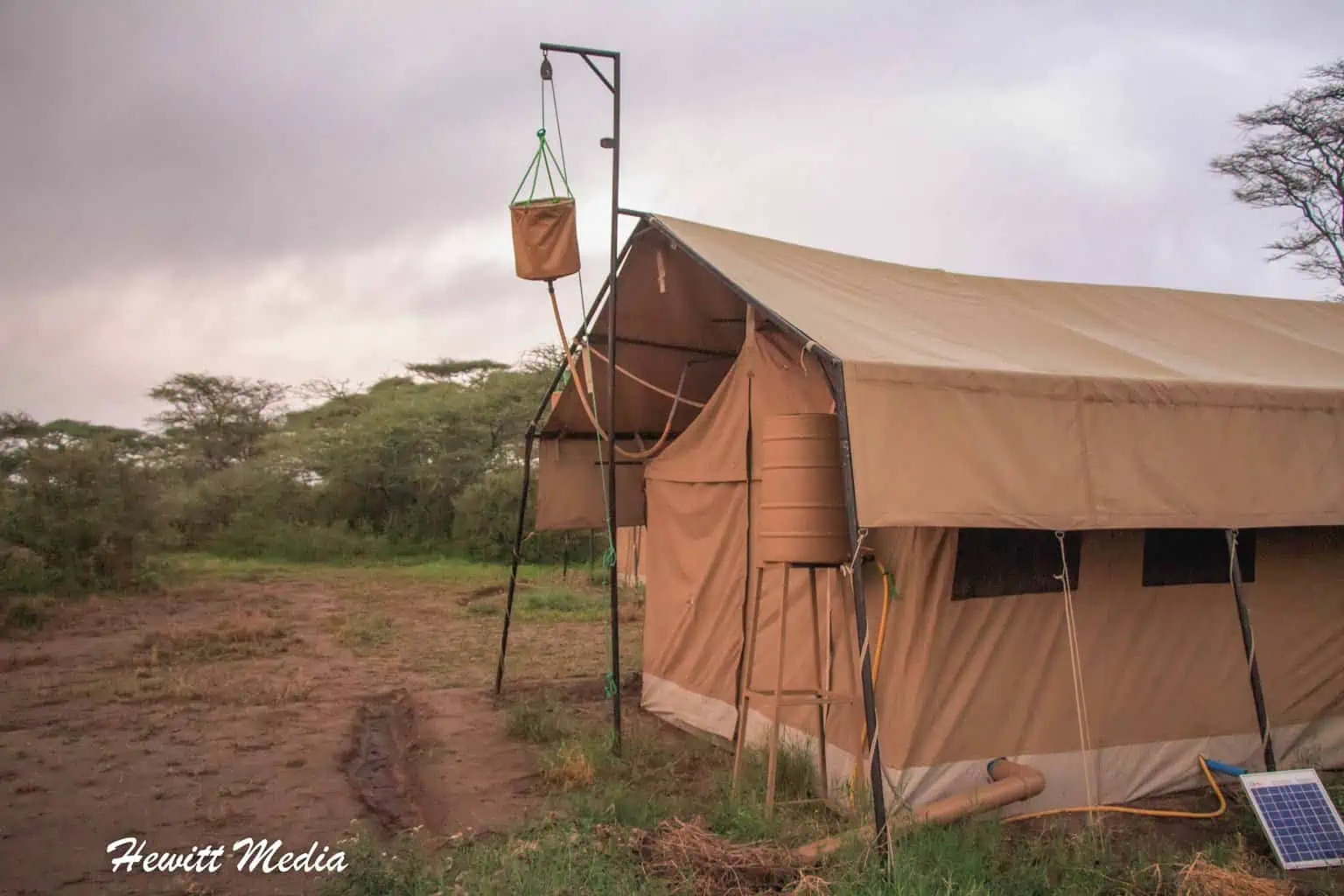
As soon as we dropped off our things and briefly toured our quarters for that night, we were invited back to the main tent to sit by the fire and enjoy the rest of our evening. The camp operators were extremely friendly, as were the other patrons we spoke to. We were kindred spirits sharing an amazing adventure in one of this world’s last wild places. There was much to talk about.
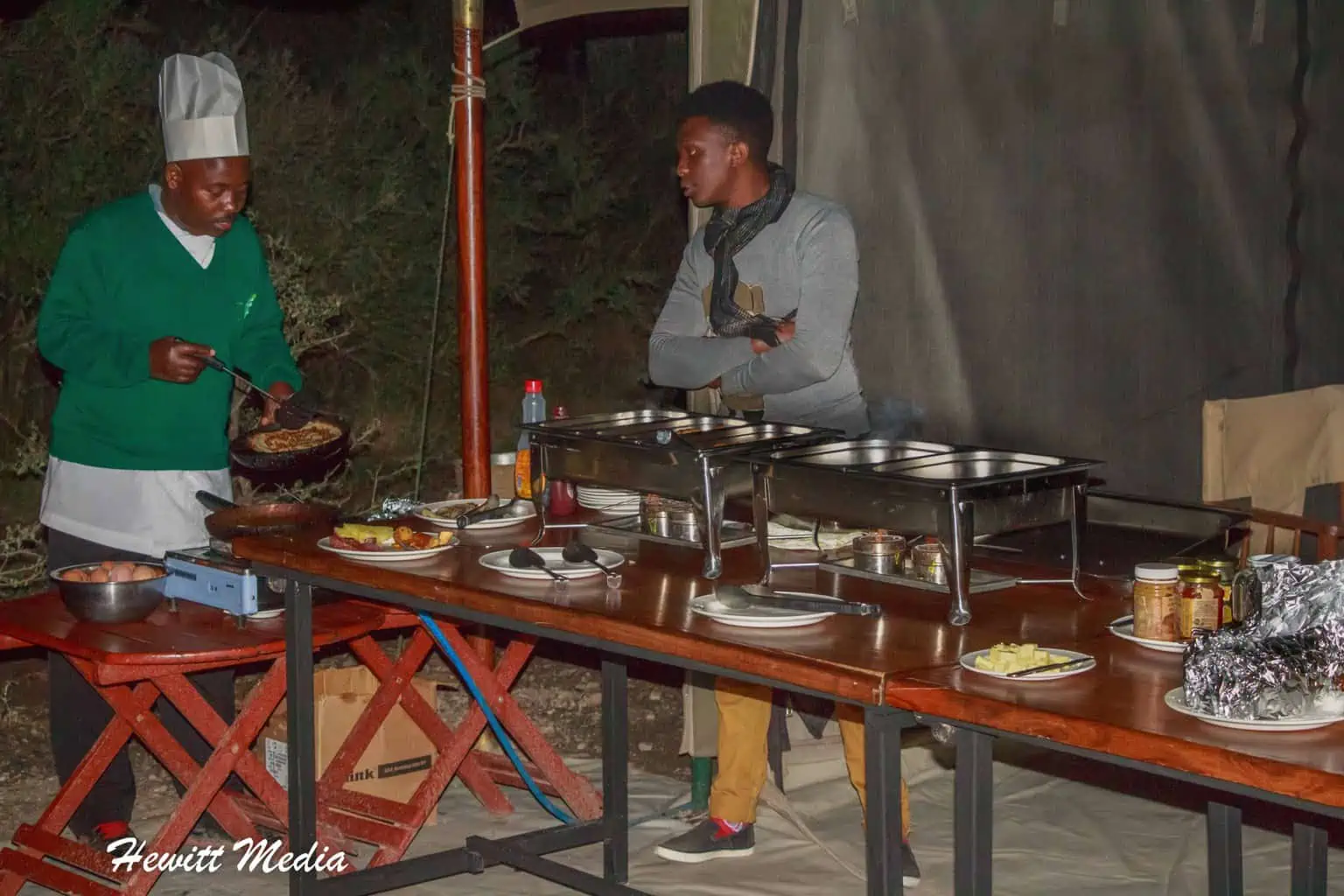
As the fire grew smaller and people slowly started retiring to their tents for the night, I just sat back in my chair and stared out into the darkness of the Serengeti, wondering what kinds of adventures we would have the next day. I felt so alive.
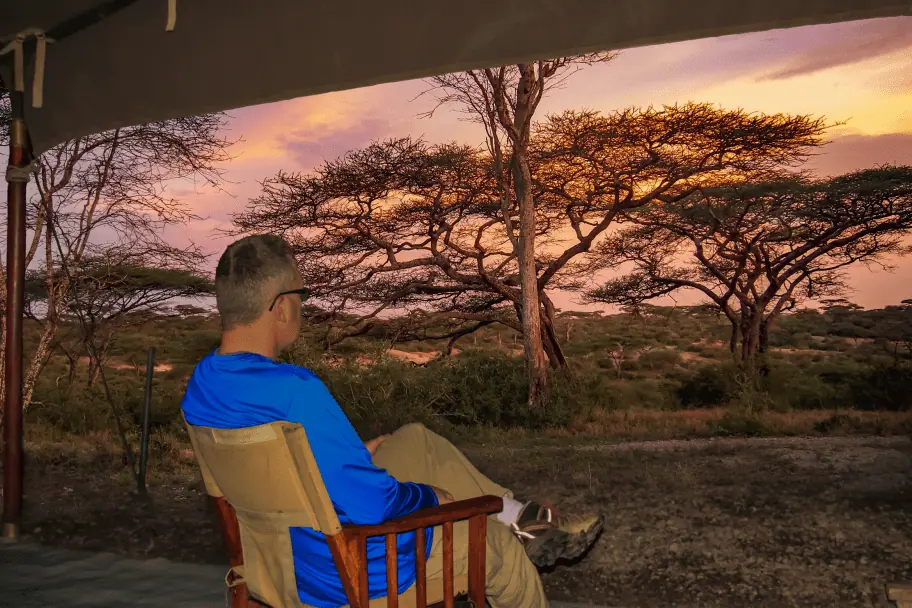
As our group was led back to our tents, we were reminded again by the Maasai man who was in charge of security at the camp that we were not to, under any circumstances, leave our tents on our own at night. If we needed something, we were to shout for assistance. In the case of an emergency, each tent was equipped with a whistle.
I thought of this as I lay there awake, listening to the sound of hyenas approaching. They were so close I imagined them right outside our tent. Should I shout for assistance? Should I use the whistle they gave us? Trying to remain calm, I decided instead to just remain quiet. Surely the camp operators must hear them if I can, and if the hyenas were too close or we were in any real danger, I am sure they would do something.
| READ MORE: |
 |
| Serengeti National Park Safari Guide |
Eventually, the calls of the hyenas grew more distant as they seemingly passed by our camp on the way to pursue other business. I continued to lay there awake for another half-hour or so, contemplating what I had just experienced and wondering to myself if I had ever experienced such a rush of adrenaline on a trip. It was a surreal experience. Camping in the Serengeti National Park was turning out to be quite an adventure.
The next morning, the breakfast table was alive with discussion about our visitors the previous night. I asked our tour guide if he had experienced anything like that before, and he mentioned that he had.
He informed us that the whooping calls we heard the hyenas make the night before were their way of communicating with each other, and his guess was that they were heading towards food somewhere on the plains below us. Hyenas are known to frequent the campgrounds in search of food, but since they passed through so quickly they must have been on their way someplace else.
We decided as a group that we would explore in the direction the hyenas headed after we finished our breakfast and packed up. It was raining that morning, and our day on safari in the Ndutu plains of the Serengeti would be a wet one.
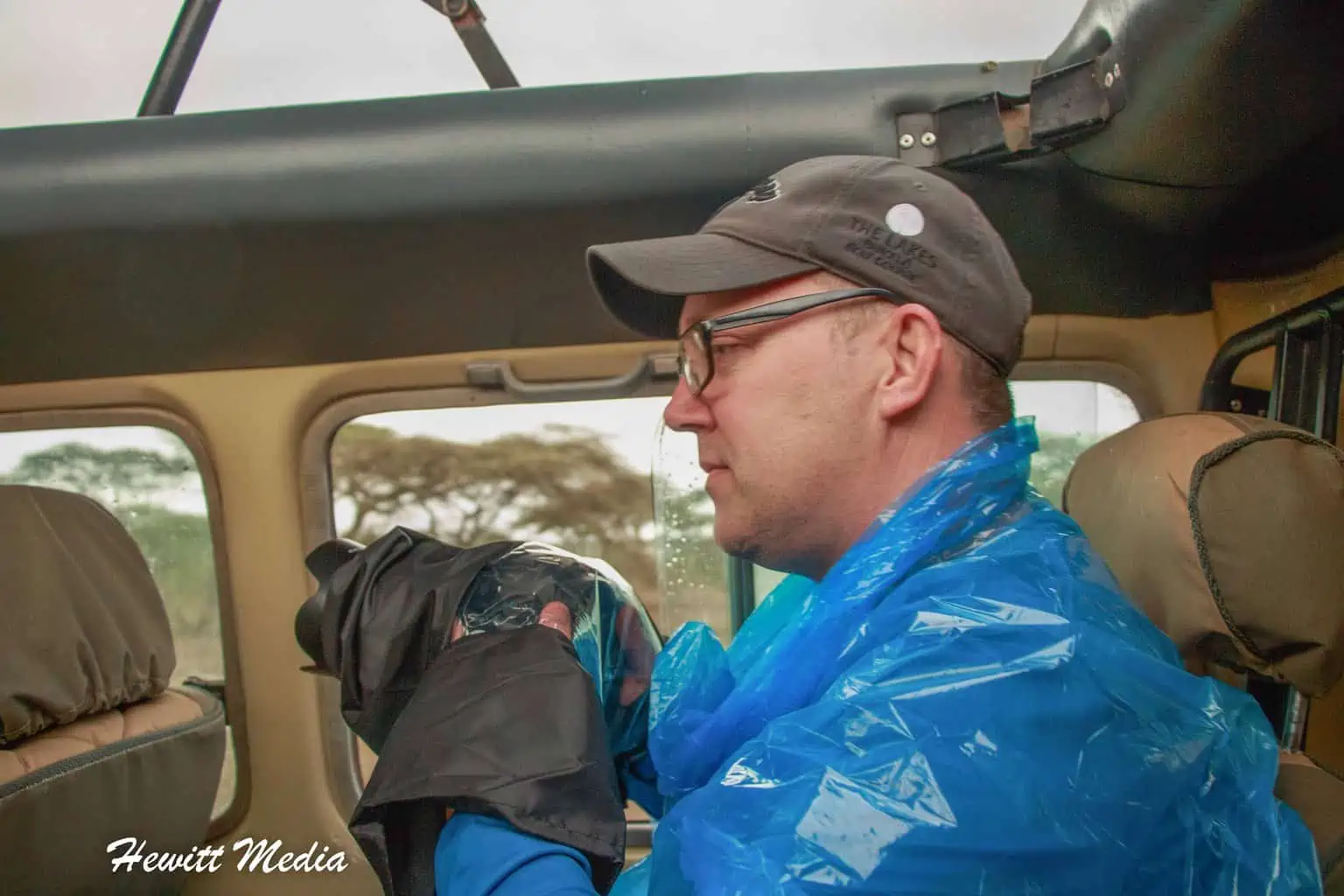
| READ MORE: |
 |
| Our Stuck in the Serengeti Adventure |
We would get stuck in the mud in the Serengeti a few times that day, but not before we discovered what we believed was the meal the hyenas were after. It wasn’t long after heading out that morning that we discovered a pride of lions feeding on a fresh wildebeest kill. They must have made the kill during the night.
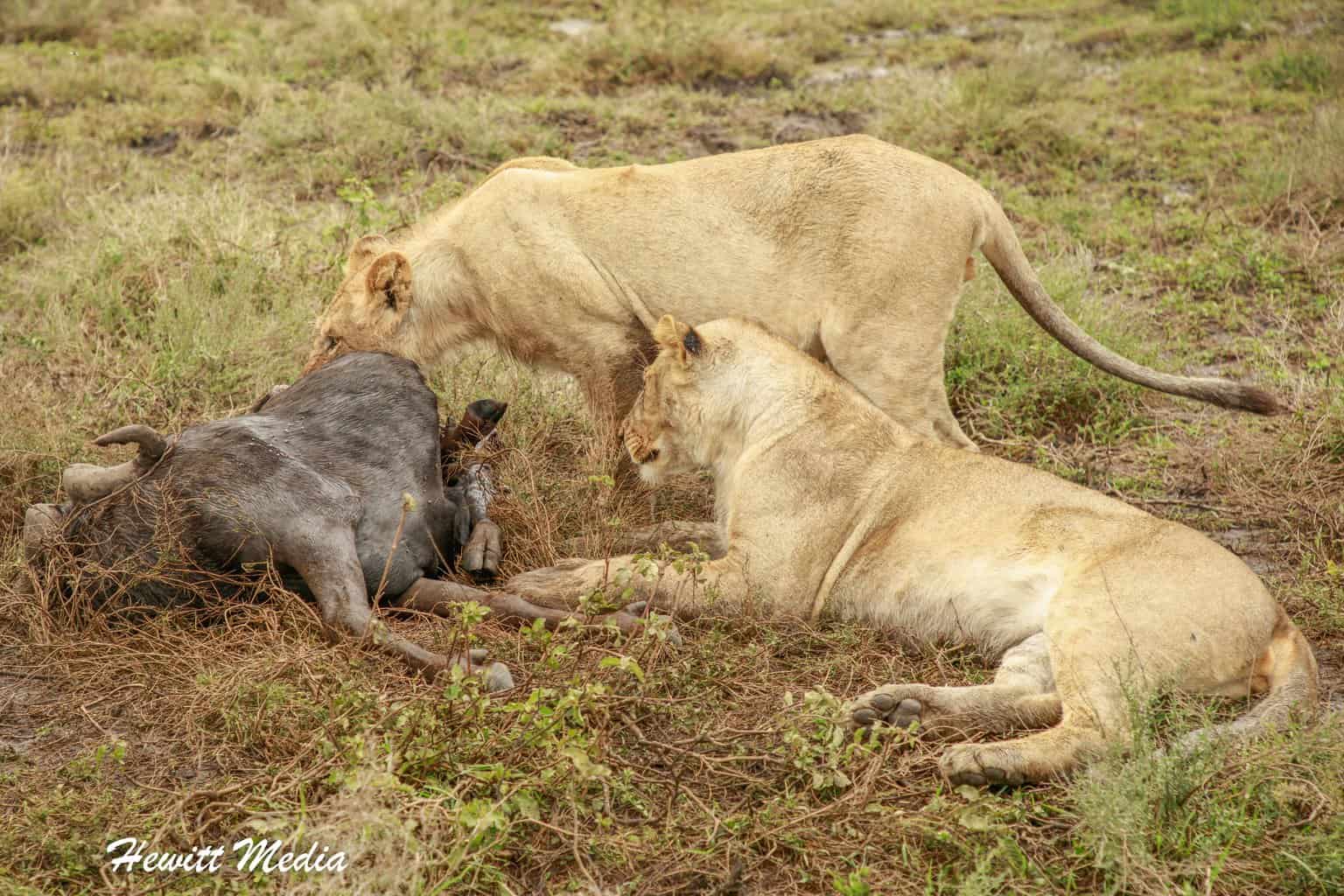
Lions and hyenas directly compete for the same food, and the hyenas we heard were likely on their way to investigate this kill. If hyenas have enough numbers and there aren’t any large, adult male lions present, then hyenas have been known to chase lions off of their kills. They must not have had the numbers they needed that night as the lions were still enjoying their breakfast when we arrived and there was no sign of the hyenas we heard.
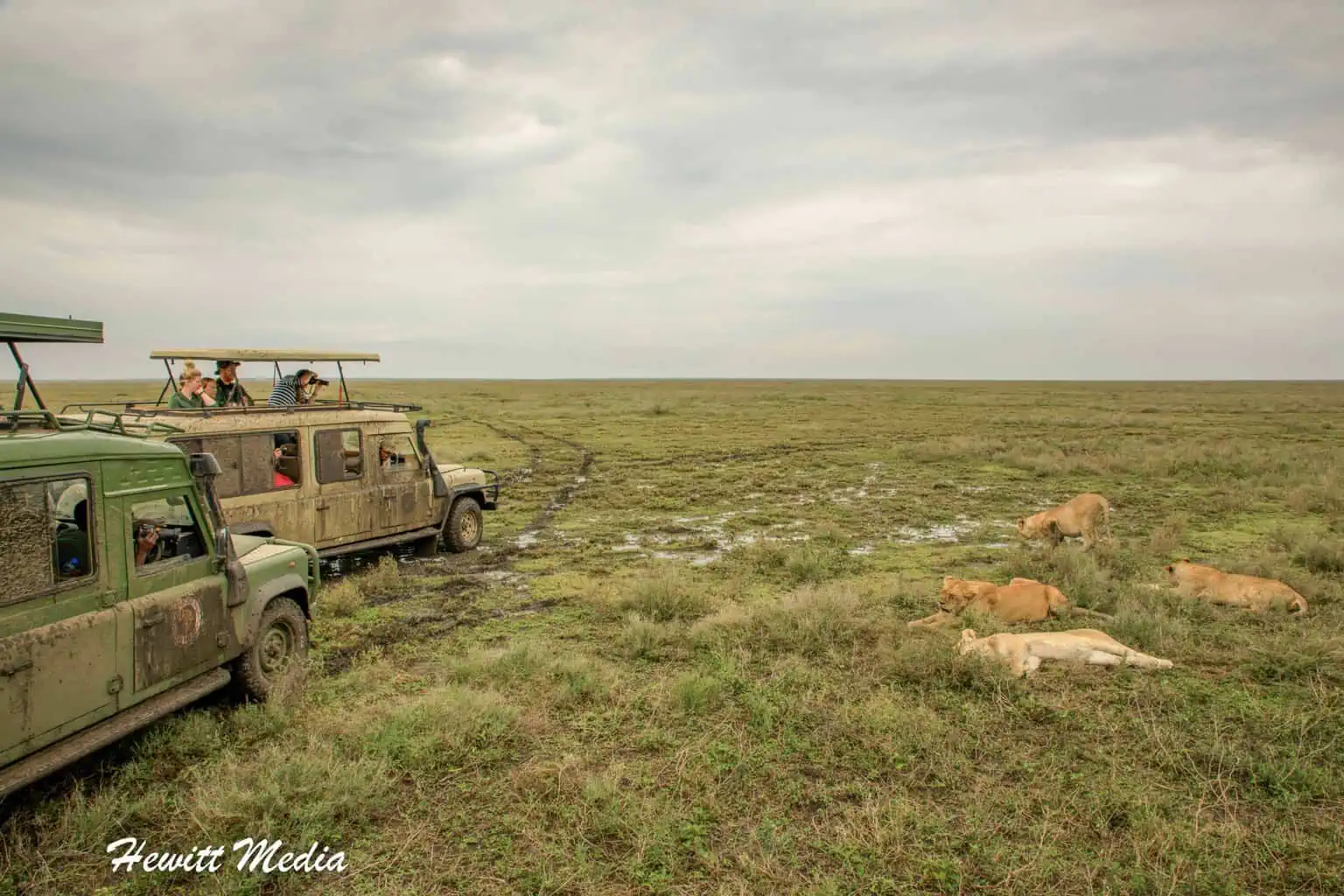
As we all sat there watching the lions feeding, I couldn’t help but think to myself that our experience on safari in the Serengeti couldn’t have been a more amazing adventure.
Photo Gallery
If you would like to see more of my travel photography, I would also encourage you to give me a follow on Instagram. Putting this blog together to pass on my free guides, itineraries, and travel photography tips is a lot of work and your support in the form of a follow-on Instagram would be so very much appreciated!
FOLLOW ME!


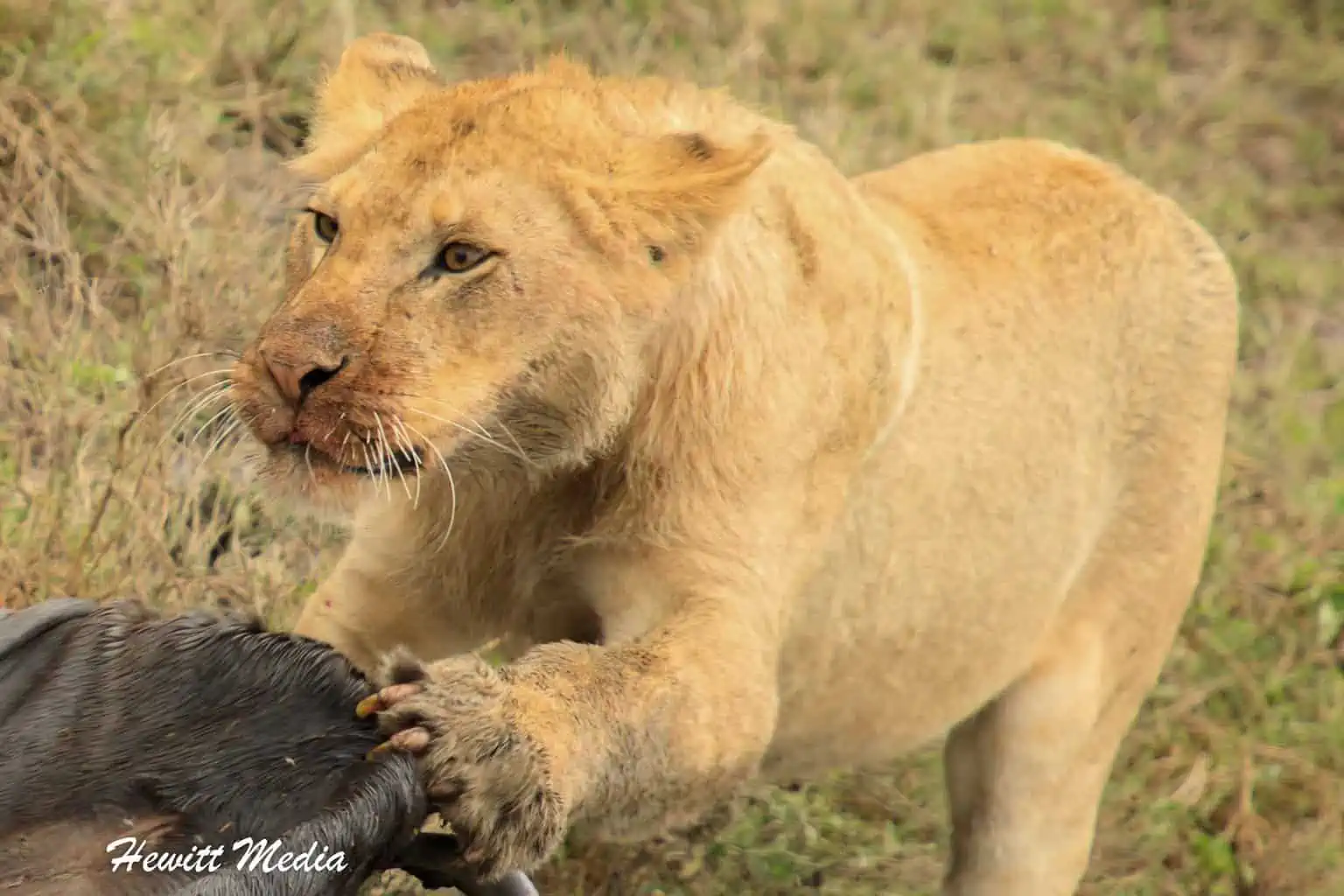
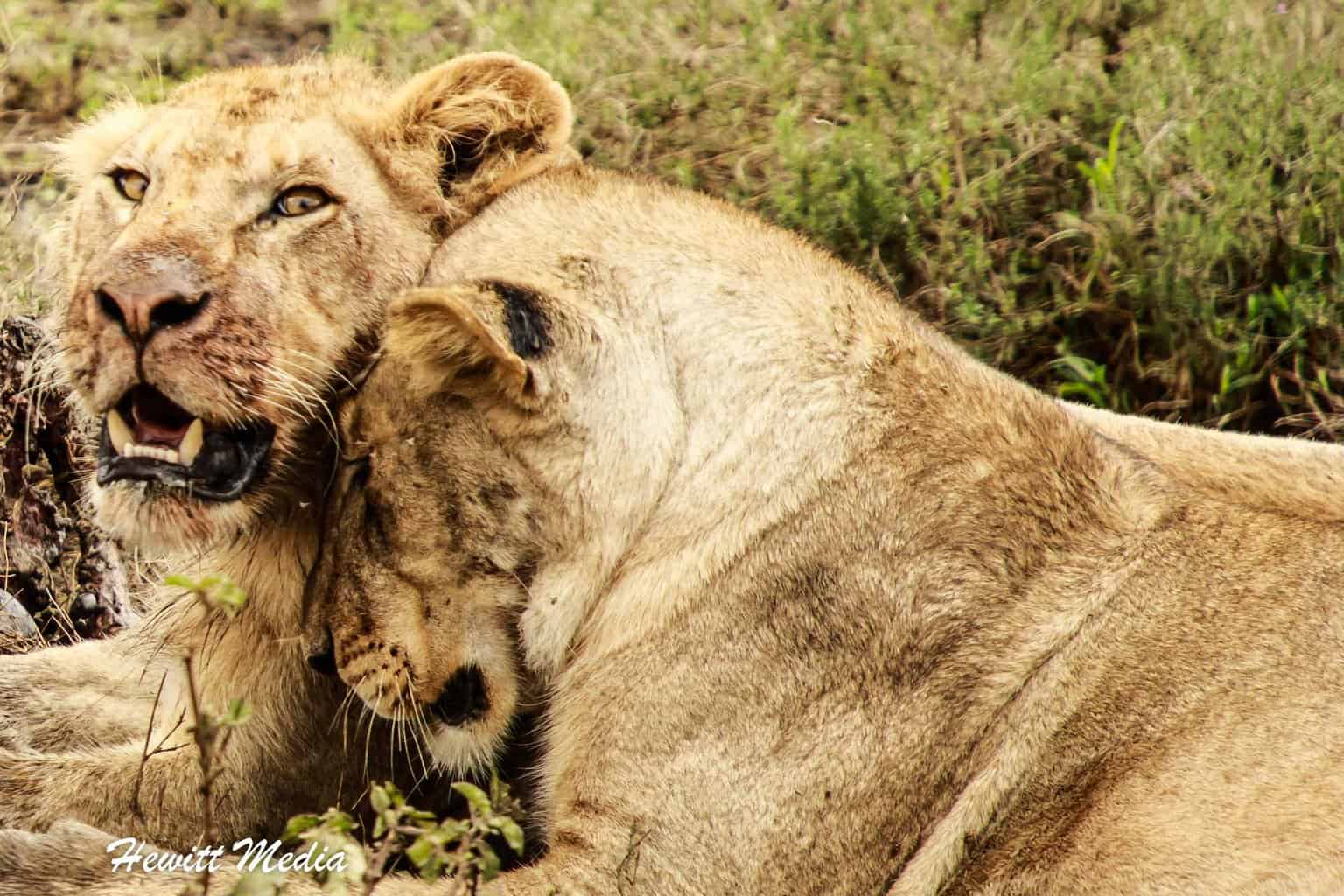



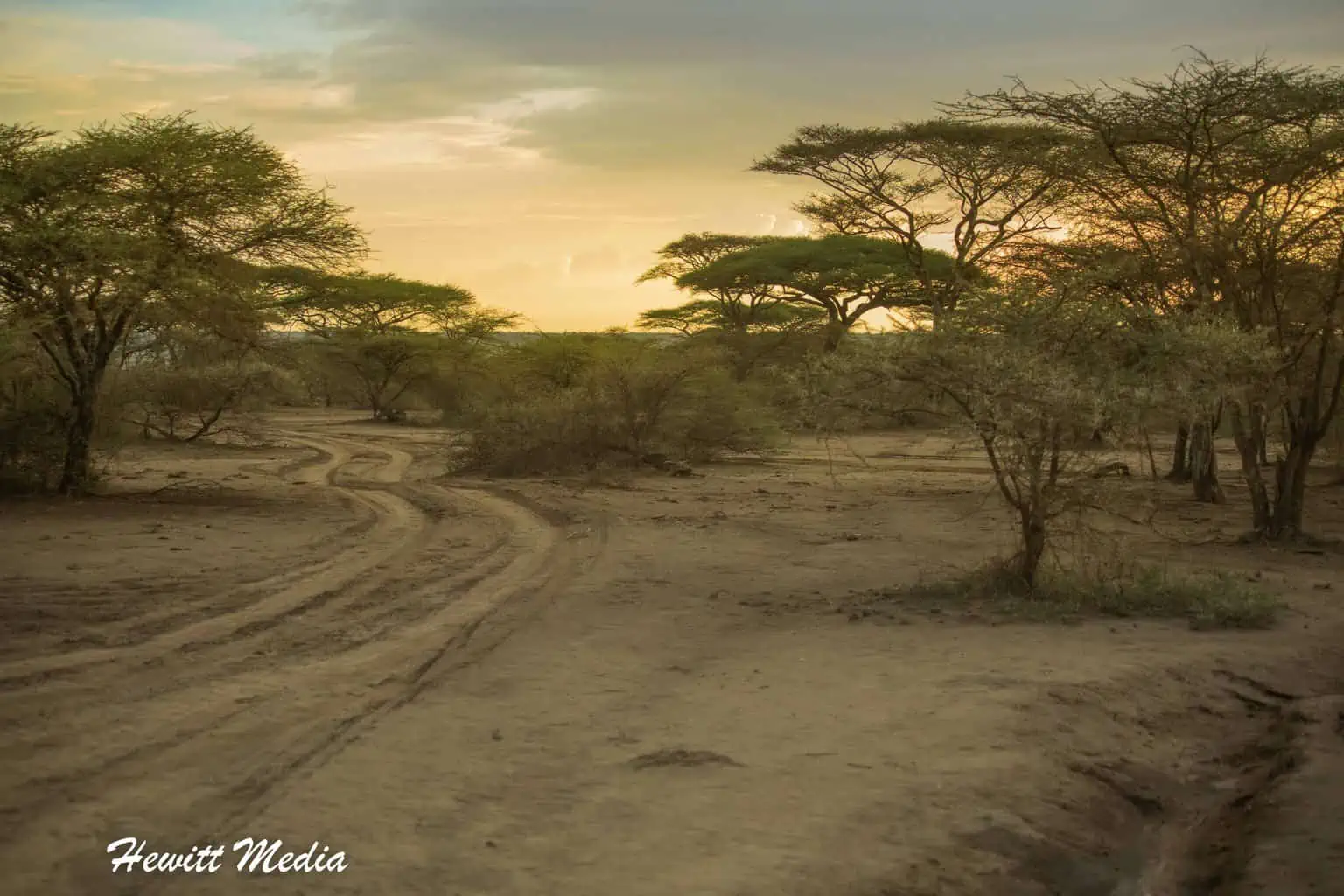
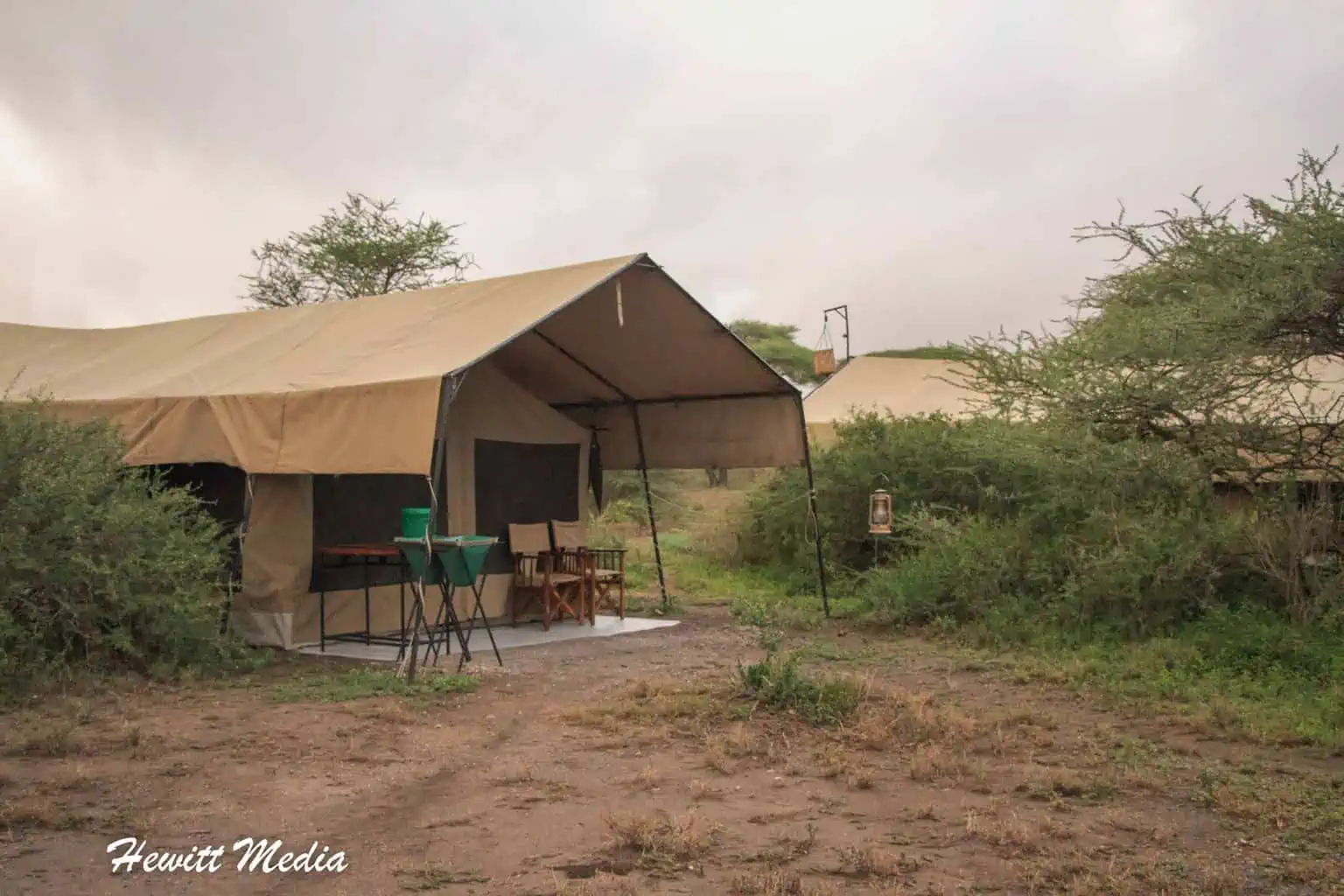
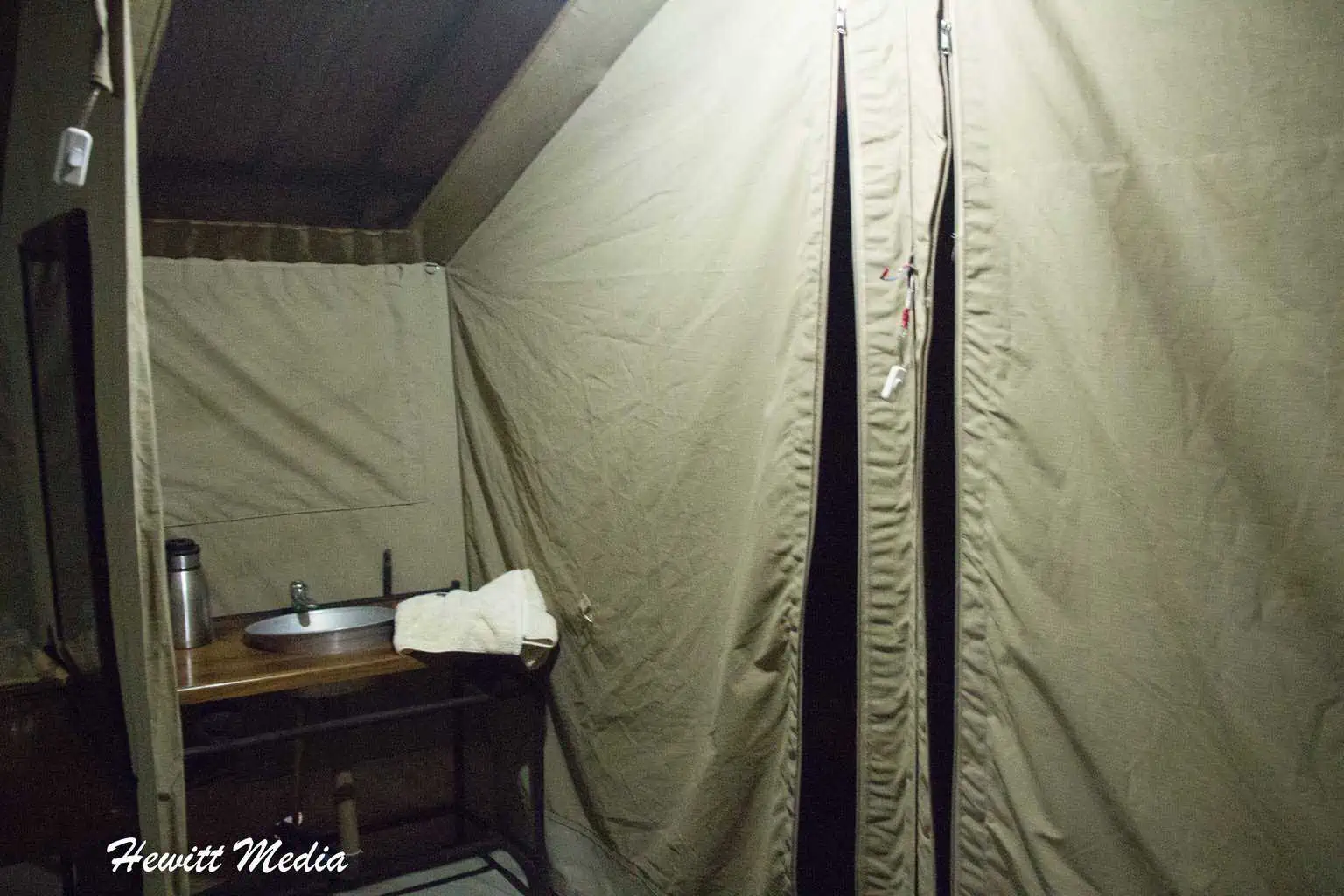
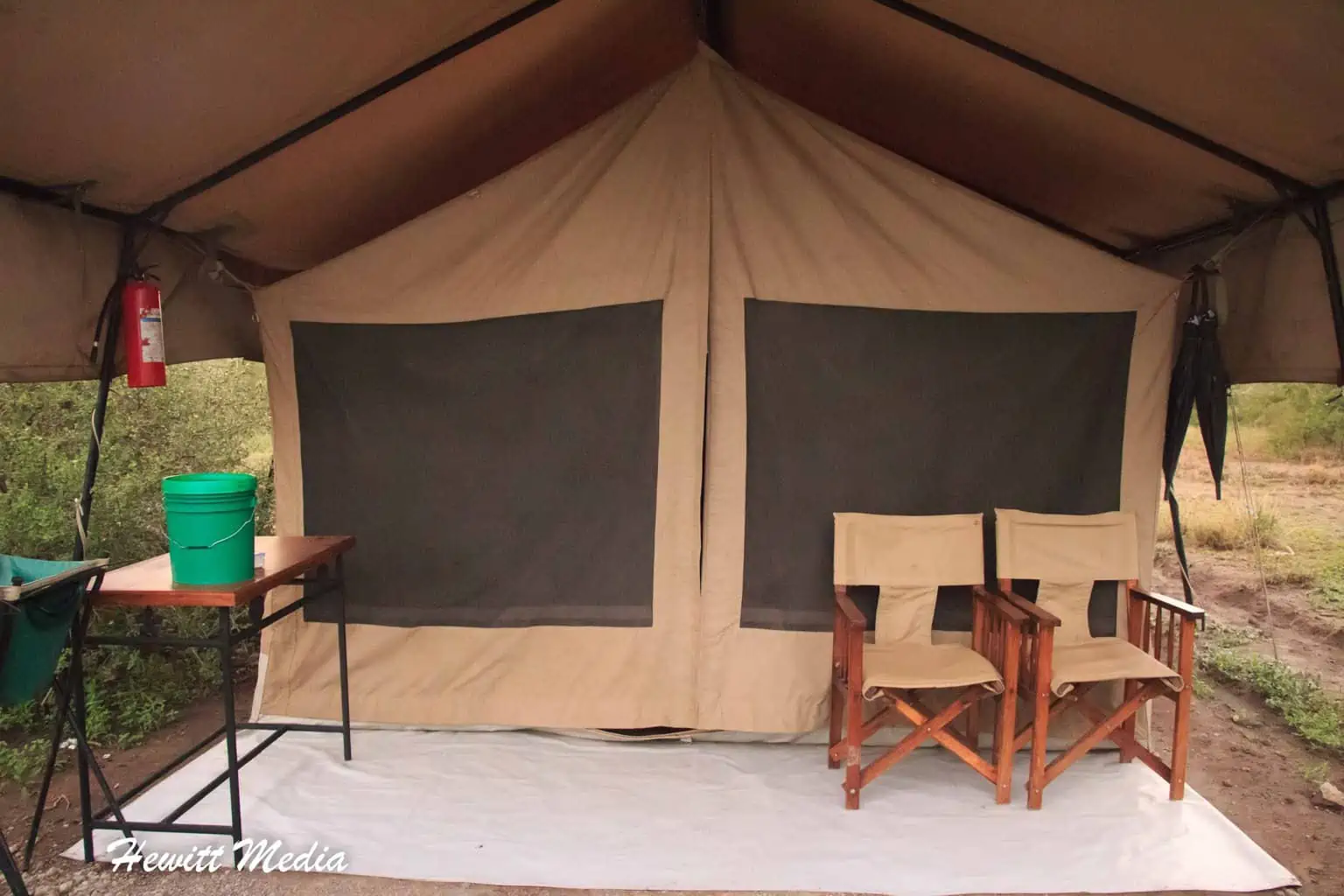




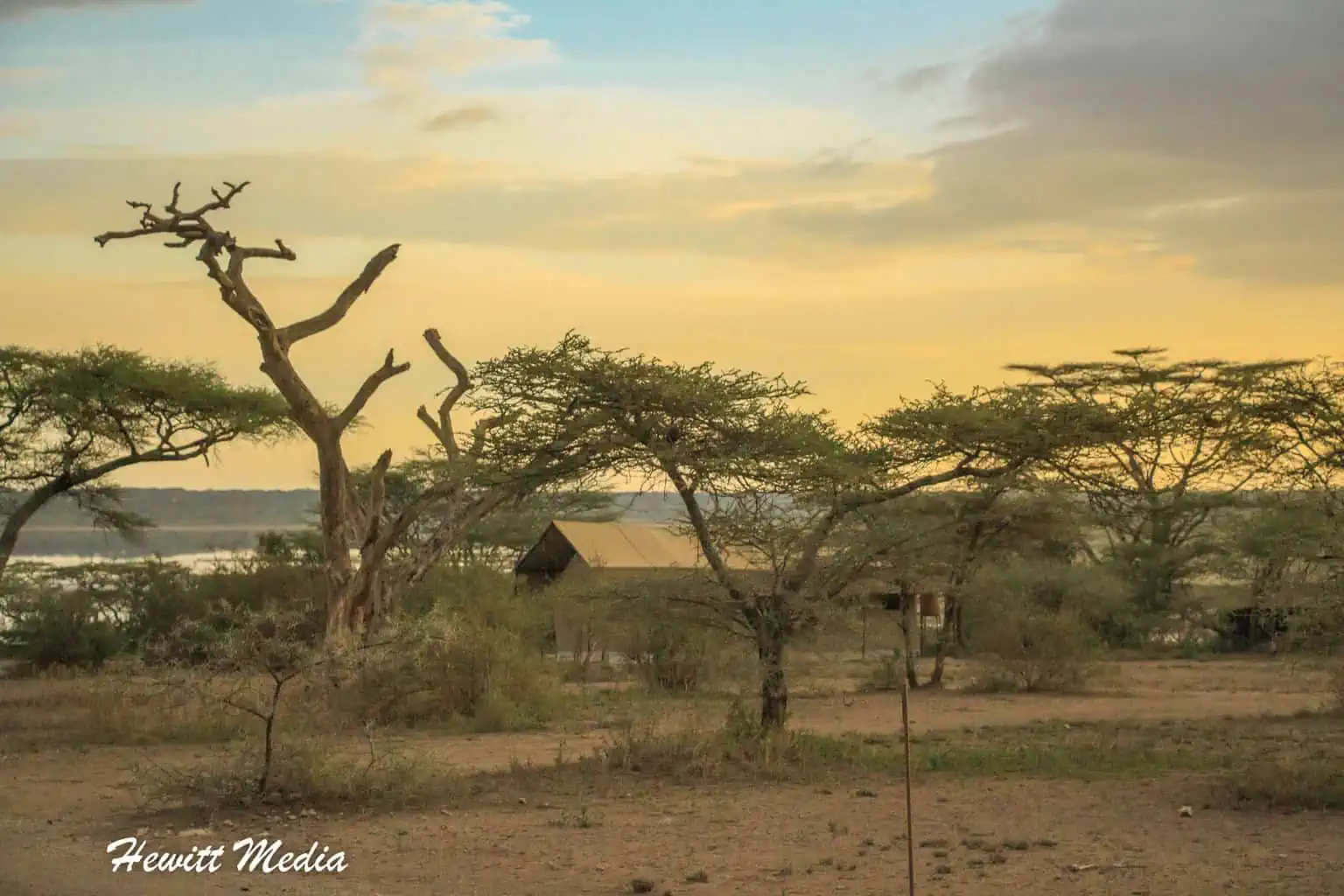
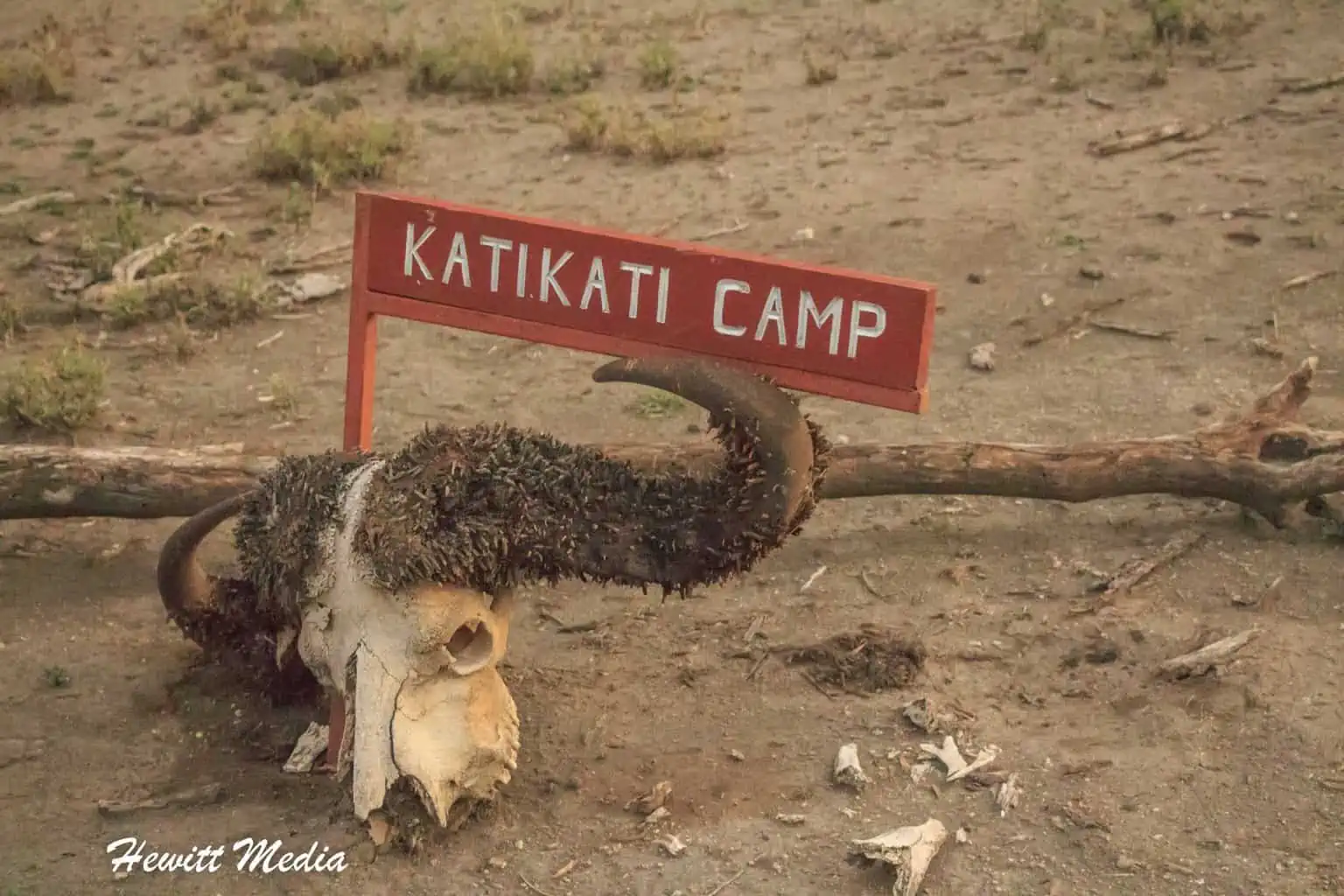

Don’t Forget to Subscribe to My Adventures!

Let Me Help You Save On Your Next Adventure!
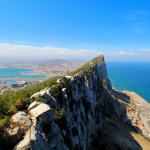



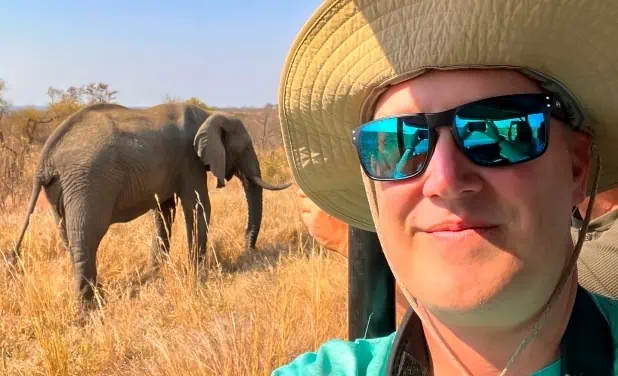
Reblogged this on Sig Nordal, Jr. .
Thank you!
My pleasure